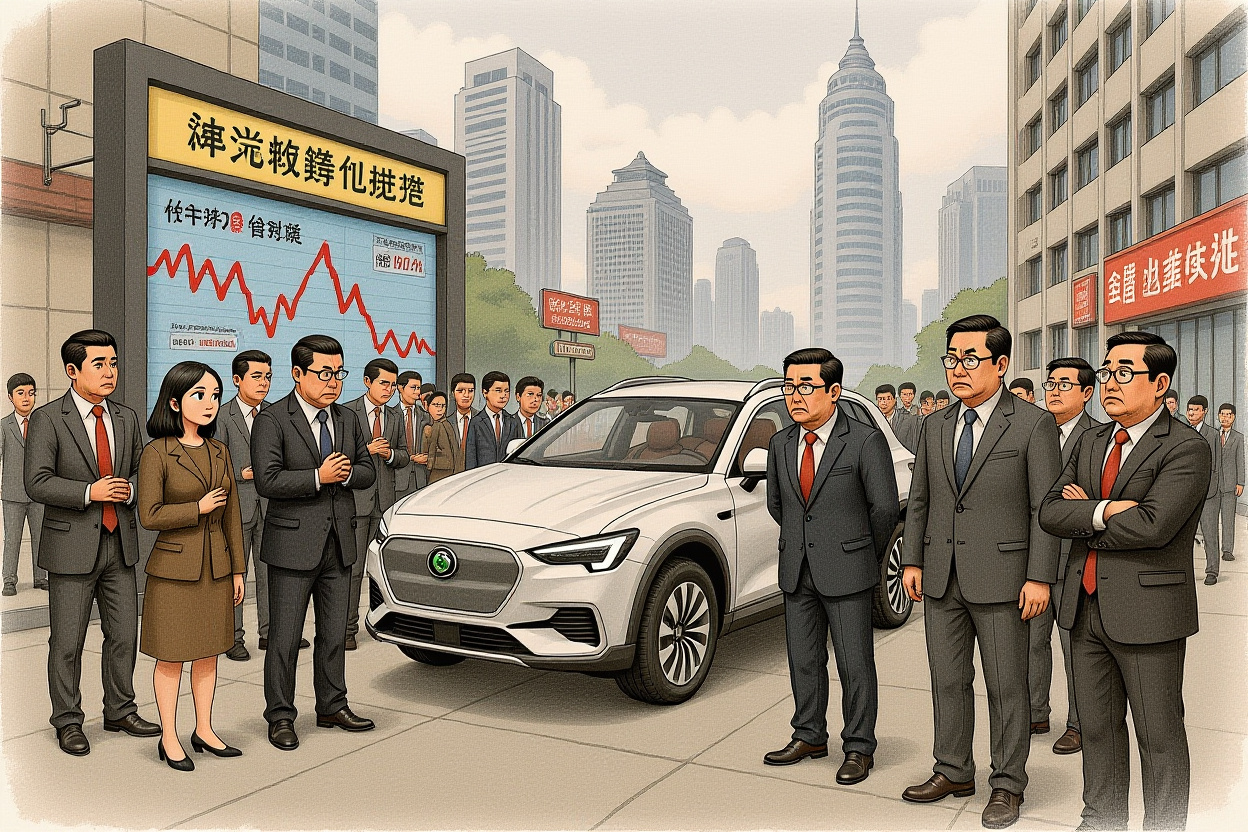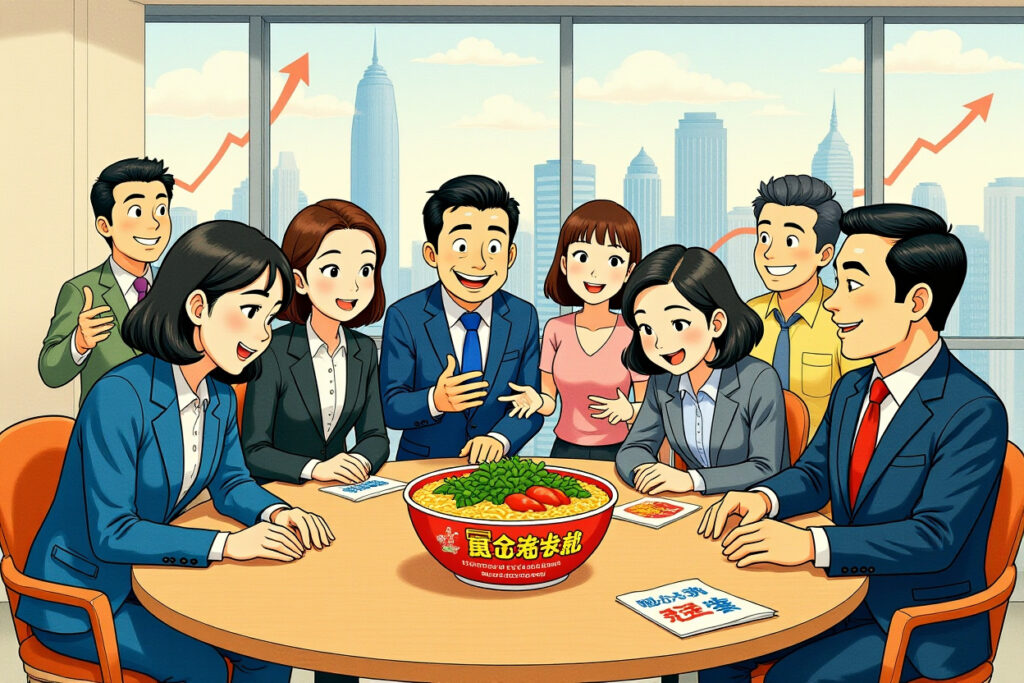Executive Summary
- Millions of Chinese new energy vehicle owners are grappling with voided warranties and repair challenges after multiple NEV manufacturers declared bankruptcy.
- Post-bankruptcy scenarios reveal critical gaps in售后服务体系 (after-sales service systems), leaving owners to bear high repair costs independently.
- Industry experts like Song Quanye (宋全业) highlight unique NEV repair hurdles, including scarce parts and technical barriers compared to traditional燃油车 (fuel vehicles).
- Emerging solutions from platforms like Tuhu Yangche (途虎养车) aim to standardize repairs, but regulatory frameworks remain underdeveloped.
- This new energy vehicle bankruptcy aftermath underscores urgent needs for consumer protections and industry-wide reforms in China’s evolving auto market.
The Rising Tide of Abandoned NEVs
When Neta Auto (哪吒汽车) entered bankruptcy proceedings in June 2025, over 400,000 owners discovered their warranty promises had evaporated overnight. This scenario mirrors earlier collapses, such as WM Motor (威马汽车), highlighting a systemic issue in China’s new energy vehicle sector. The new energy vehicle bankruptcy aftermath has left a trail of frustrated consumers who purchased cars during the industry’s boom, only to face售后 (after-sales) nightmares post-collapse.
Incomplete statistics indicate that millions of owners have been affected by bankrupt automakers over the past decade. As companies like HiPhi (高合) and Jiyue (极越) falter, the fallout extends beyond financial losses to operational voids in maintenance and support. This new energy vehicle bankruptcy aftermath is not just a corporate failure but a consumer crisis demanding immediate attention.
Case Study: Neta Auto’s Downfall
Owners like Gao Chang (a pseudonym) reported that 4S stores ceased operations, cutting off access to genuine parts and services. Terminations of车联网 (telematics) services in September 2025 exacerbated issues, disabling features like remote control and entertainment. The new energy vehicle bankruptcy aftermath here forced owners to seek expensive alternatives, such as purchasing data plans independently.
Historical Precedents from WM Motor to Others
WM Motor’s bankruptcy earlier set a precedent, where owners formed mutual-aid groups on social media to share repair tips. This grassroots response underscores the desperation amid the new energy vehicle bankruptcy aftermath, as official channels dissolve.
Collapse of Warranty and Service Systems
The voiding of终身质保 (lifetime warranties) has become a hallmark of the new energy vehicle bankruptcy aftermath. Marketing promises like free maintenance for five years are now irrelevant, as authorized service networks disband. Owners must navigate repairs alone, often at社会独立修理厂 (independent repair shops) with no accountability.
Song Quanye (宋全业), an automotive售后领域专家 (after-sales expert), explains that NEV保养 (maintenance) is less frequent than for燃油车 (fuel vehicles), but post-bankruptcy, even basic services become luxuries. The new energy vehicle bankruptcy aftermath exposes how依赖 (reliance) on closed manufacturer systems backfires when companies fail.
Termination of Critical Services
Notifications of service halts, such as internet connectivity, leave owners stranded. For example, doors failing to unlock without network access illustrate how the new energy vehicle bankruptcy aftermath impacts daily functionality. This breach of trust erodes consumer confidence in the entire NEV market.
Expert Insights on Warranty Failures
Song Quanye (宋全业) notes that warranty terms often included restrictions, like annual mileage limits, which become unenforceable post-bankruptcy. The new energy vehicle bankruptcy aftermath reveals that without active manufacturers, even conditional guarantees are meaningless, pushing owners into costly self-repairs.
Repair Challenges and Soaring Costs
Owners describe themselves as待宰的羔羊 (lambs to the slaughter) when facing repair bills. Liu Shan (a pseudonym) spent 4,000 RMB fixing a battery issue after weeks of diagnostics, highlighting the new energy vehicle bankruptcy aftermath’s financial toll. The scarcity of配件 (parts) and technical expertise inflates prices, with owners having little bargaining power.
Repair shops source parts through three channels:原配件厂流通件 (original factory surplus),拆车件 (salvaged parts), and倒闭4S店的流通件 (bankrupt 4S store inventory). However,副厂件 (aftermarket parts) are rare for low-volume NEVs, worsening the new energy vehicle bankruptcy aftermath. Song Quanye (宋全业) emphasizes that repair shops capitalize on this monopoly, charging premiums for essential services.
Real Owner Experiences
In online communities, owners share DIY repair guides or pool resources to buy parts cheaply from e-commerce platforms. This self-help movement is a direct response to the new energy vehicle bankruptcy aftermath, where official support is absent. For instance, replacing a tire bearing costs 450 RMB at shops but only 200 RMB if owners supply parts themselves.
Sourcing and Technical Hurdles
With manufacturers’ servers offline, repairs often require破解系统 (system hacking), which was once risky but now goes unpunished. The new energy vehicle bankruptcy aftermath thus creates a legal gray area, where safety standards may be compromised. Song Quanye (宋全业) warns that without standardized protocols, repairs could pose risks.
Industry Dynamics and NEV-Specific Issues
Compared to燃油车 (fuel vehicles), NEVs face steeper售后 (after-sales) challenges due to proprietary technology and high entry barriers. Song Quanye (宋全业) points out that repair shops need 5-10 million RMB investments for certifications, deterring many from specializing. This new energy vehicle bankruptcy aftermath is exacerbated by a lack of competitive pressure, keeping part prices high.
Traditional cases like广汽菲克 (GAC Fiat Chrysler) saw Stellantis Group continue support post-exit, but NEV bankruptcies lack similar safety nets. The new energy vehicle bankruptcy aftermath highlights how immature ecosystems fail to protect consumers. Platforms like Tuhu Yangche (途虎养车) and Tmall Yangche (天猫养车) are introducing新能源专修 (NEV-specific repairs), yet progress is slow.
Comparison with Fuel Vehicle Markets
Fuel vehicles benefit from decades of insurer-manufacturer negotiations and generic parts, reducing costs. In contrast, the new energy vehicle bankruptcy aftermath shows NEV repairs remain niche, with limited options. Song Quanye (宋全业) attributes this to manufacturers’封闭体系 (closed systems), designed to maximize profits during operations but abandon owners afterward.
Emerging Solutions and Gaps
Initiatives by major platforms aim to lower technical barriers through standardized equipment. However, the new energy vehicle bankruptcy aftermath requires stronger regulatory intervention, such as mandatory售后 (after-sales) funds or open data access. For now, owners remain vulnerable in this evolving landscape.
Pathways to Mitigating the Crisis
The new energy vehicle bankruptcy aftermath calls for collaborative efforts among regulators, manufacturers, and consumers. Learning from global examples, China could implement escrow accounts for warranty obligations or encourage third-party certifications. This proactive approach would shield owners from future collapses.
Song Quanye (宋全业) suggests that increasing repair shop incentives and data transparency could alleviate issues. As the new energy vehicle bankruptcy aftermath unfolds, stakeholders must prioritize sustainable models over short-term gains. The crisis underscores that innovation without accountability harms market integrity.
Regulatory and Market Reforms
Authorities like the Ministry of Industry and Information Technology (工业和信息化部) could mandate post-bankruptcy support protocols. The new energy vehicle bankruptcy aftermath presents an opportunity to refine policies, ensuring that growth does not come at consumers’ expense.
Consumer Empowerment Strategies
Owners can leverage collective bargaining or insurance products covering manufacturer insolvency. The new energy vehicle bankruptcy aftermath teaches that due diligence on brand stability is as crucial as vehicle features. Engaging with industry groups can amplify voices for change.
Navigating the Future of NEV Ownership
The new energy vehicle bankruptcy aftermath is a wake-up call for China’s auto industry. While NEVs offer environmental benefits, their售后 (after-sales) vulnerabilities demand urgent addressal. Owners, regulators, and businesses must unite to build resilient systems that survive corporate failures.
As the market matures, embracing open standards and consumer protections will be key. The new energy vehicle bankruptcy aftermath should inspire reforms that balance innovation with reliability, ensuring that progress does not leave millions behind. Take action by supporting advocacy for stronger warranties and transparent repair networks to safeguard your investments.




